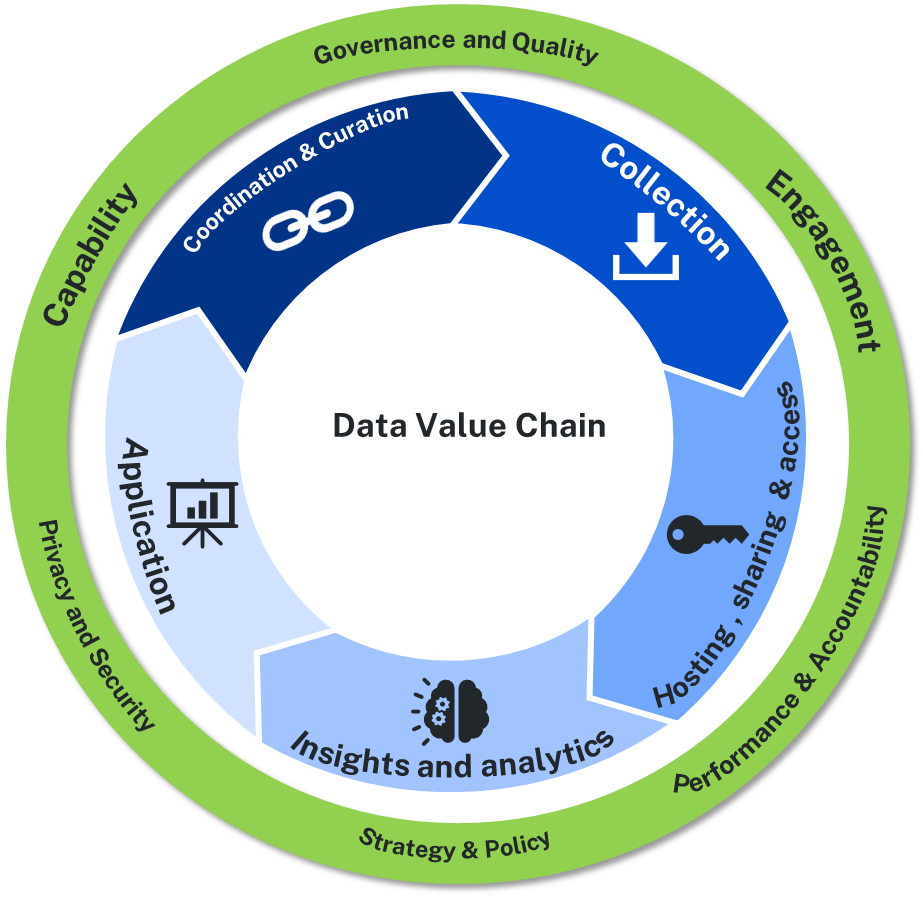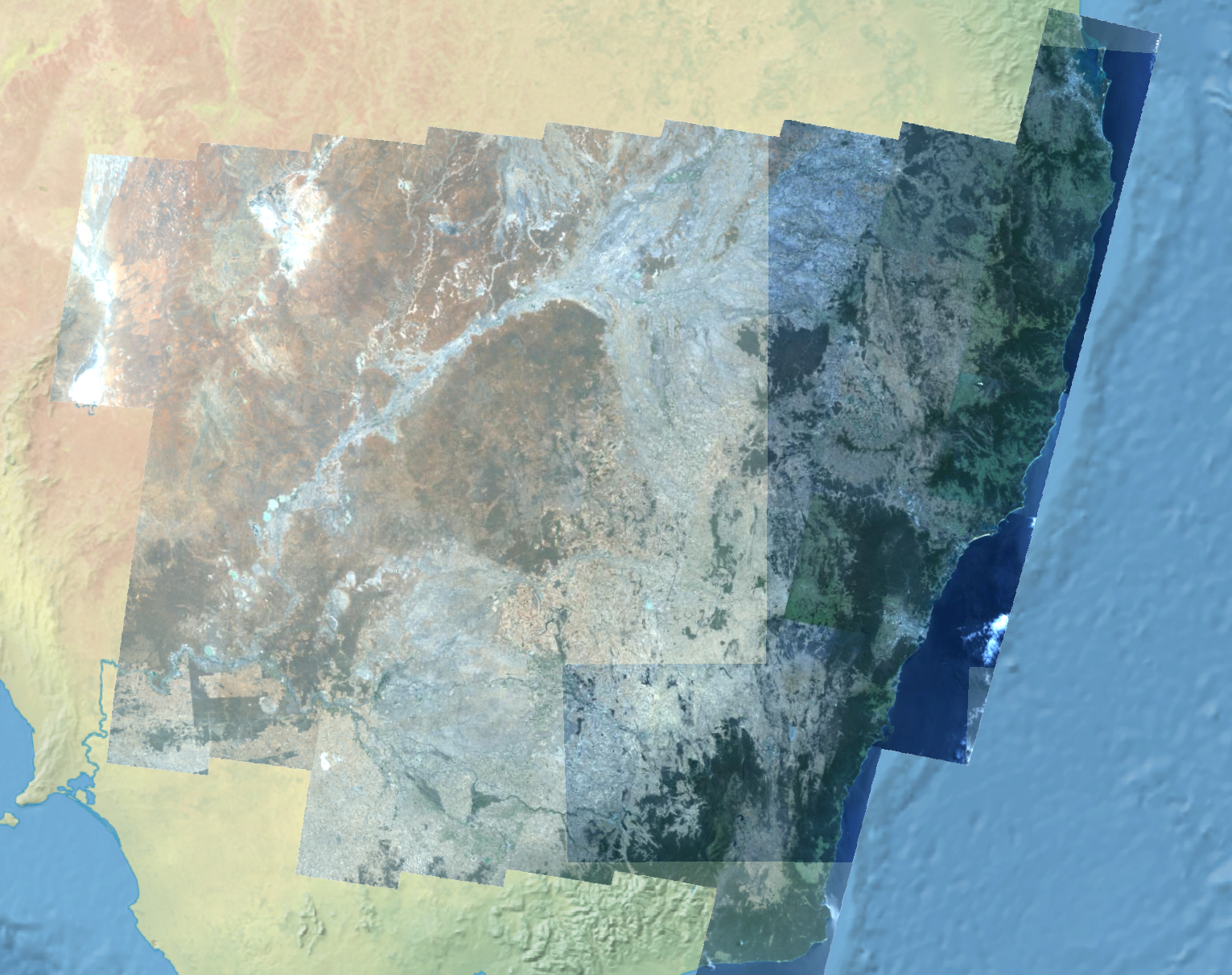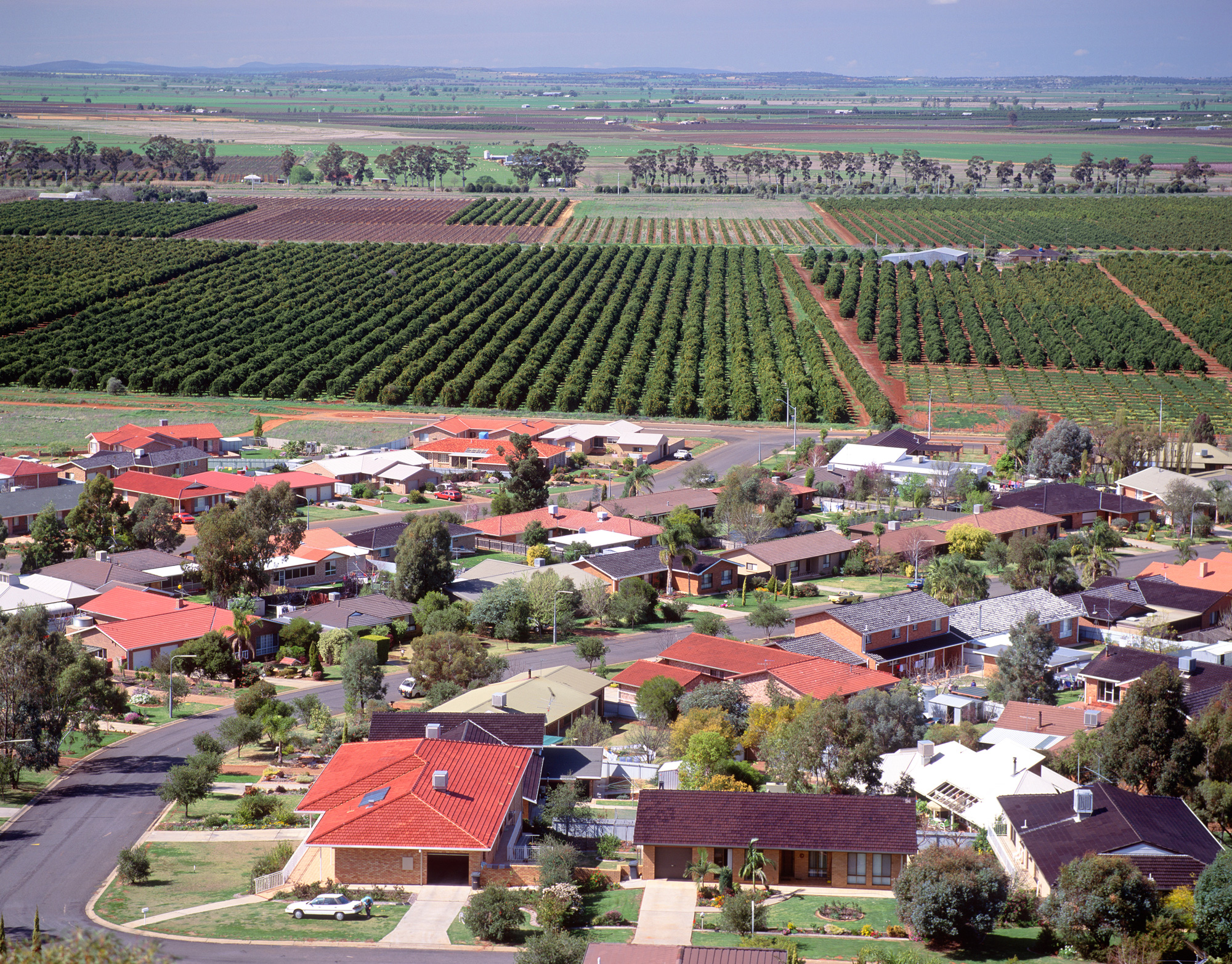Mission 2
Deliver data for better outcomes.

Our goals
Good data enables government to deliver its priorities more effectively. With high quality, relevant and timely data, government can understand community needs, address priorities and assess the impact of programs and services.
Our goal is to put fit for purpose data and insights into the hands of decision-makers at the right time to support the policy, program and investment decisions and to measure impact to deliver better outcomes and improve wellbeing of people and communities.
This means having access to the best available data, that is managed to provide efficient and effective access and use, while maintaining privacy and safety.
 Diagram 2: Illustrative example of a data value chain
Diagram 2: Illustrative example of a data value chain
A skilled and effective system of people and processes is needed to manage and use data – from data collection, to how data is categorised, managed, accessed and analysed, and finally how it is and used in practice. These processes, and the systems of governance, engagement and expertise that surround them, collectively make up a ‘data value chain’. Diagram 2 provides an illustrative example of a data value chain that reflects key aspects of the approaches used in NSW.
2A: Join up data for more holistic insights
2B: Embed data and insights into decision making
How we’ll get there
2A: Join up data for more holistic insights
Data that is collected by a single agency provides only one perspective of a person. The process of data linking joins up data from across agencies to create a holistic view.
Linked data provides richer insights about people’s needs and life experiences that would not otherwise be possible, while still maintaining safe, private and ethical use. It can provide insights about people’s life pathways from birth to adulthood, and their touchpoints with government services. The National Disability Data Asset (NDDA) and the Australian National Data Integration Infrastructure (ANDII) share and link data from across the Commonwealth Governments and all Australian States and Territories. The data and insights that can be obtained are much greater than is feasible with NSW data alone.
Our goal is to use data from the NDDA and ANDII to produce richer insights and a better understanding of the experiences of people with disability in NSW and nationally.
To enable NSW to gain maximum benefit from the opportunities linked data provides, we must also develop and implement a model for linked data capability at the state level.
- NSW delivers on its commitments to national data reform initiatives, including National Disability Data Asset and Australian National Integration Infrastructure
- Enhance interoperability and coordination of state and national datasets and infrastructure
- NSW has participated in the NDDA/ANDII reform project since its earliest stages, including leading a national pilot project.
- NSW has entered into agreements with the Commonwealth, States and Territories and participates in governance and planning committees to further the implementation of the NDDA.
- Several NSW Government agencies have or are working towards receiving accreditation from Officer of the National Data Commissioner to obtain and use Australian Government Data, as well as to provide complex data integration, de-identification and secure data access services.
- The Human Services Data Set – the largest human services linked data asset in the NSW Government - is used to gain insights into the needs of vulnerable children and their families. It contains deidentified information on 9 million people spanning more than 60 frontline datasets from across 12 agencies.
- Linked data assets have also been developed in the areas of homelessness, education and training pathways to employment, education for children with disability, health services, environmental and climate change.
- The Standardised Evaluation Analysis (StEvAn) model has been developed by the Department of Communities and Justice to support the implementation of an investment approach for human services in NSW. It is accompanied by a Forecasting Future Outcomes model that uses evaluation results to estimate avoided cost, return-on-investment and future service use for programs focusing on vulnerable children, young people and their families.
- The NSW Child Development Study (NSW-CDS) is a long-term, data linkage study following a cohort of over 91,000 children in NSW from birth to adulthood. In a partnership with universities, it generates insights into the development of mental disorders across the life-course, with consideration of intersecting mental health, justice, education, and physical health problems.
Data Development for PWF
Human Services Dataset
Standardised Evaluation Analysis (StEvAn) model
NSW Child Development Study
National Health Data Hub
Forecasting Future Outcomes model
2B: Embed data and insights into decision making
Our goal is to make data sharing and collaboration easier and more efficient.
Agency data can often be curated from a single agency perspective. Data sharing and linking is essential for obtaining the best possible evidence to inform design and evaluation of government programs and services across social, environmental and fiscal priorities. For sharing and linking to be effective and efficient, the source data should be as consistent in quality and format as possible, accompanied by streamlined cross-sector processes.
As a first step, agencies will deliver a review of data collaborations in past and current projects and recommend improvements. This review will inform the development of an improved, interconnected data system.
- Embed a cross-sector interconnected data system to inform government priorities
- Agencies regularly report on Performance and Wellbeing Framework metrics via the Data.NSW Open Data Portal 8 metrics
- Data initiatives and proposal’s identity how they meet the information needs of service-system or agency specific, whole-of-government, or community and place-based
- The NSW Government is supporting victims and survivors of domestic and family violence through a DV Notify app. The app will provide real-time information to victims and survivors when a perpetrator leaves custody.
- The NSW Spatial Digital Twin (SDT) aims to create a single place where anyone can find accurate and certified spatial information. It will connect disparate datasets and increase consistency and capability in use of spatial data.
- Land iQ is a world-first data platform and cross-sector tool that helps agencies make faster, smarter decisions about the use of land. It has helped government agencies respond to floods, housing supply and affordability.
- Cadastre NSW gives access to near real-time mapping of property development across NSW, improving efficiency in capturing property data for new subdivision and strata scheme developments. Cadastre NSW enables earlier visibility for government agencies and service providers to support new properties and developments. Cadastre NSW has been fully integrated with the NSW Planning Portal since 1 September 2022, enabling Local Government Authorities (LGAs), state government departments, state utility providers and private industry to securely view digitised plans.
- The NSW Digital Connectivity Index is a simple, interactive visualisation tool that supports digital inclusion and regional programs aimed at enhancing digital connectivity. It transforms complex information into a user-friendly tool that is available to the public, drawing on over 400 million data points across three key elements: access, affordability and demographics. In its first 12 months, it attracted over 300,000 views for statewide connectivity insights.

